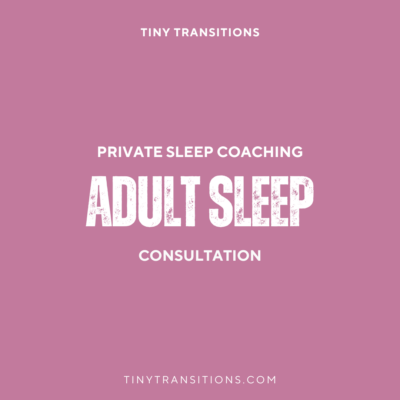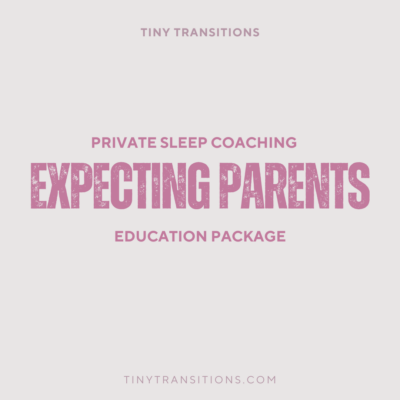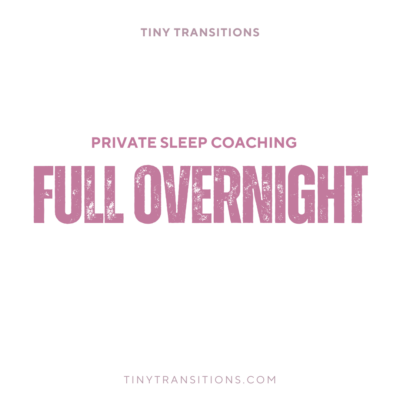Did you have a sleeping angel baby that made you feel like you could have six more of them? Then, while you were basking in your amazing luck, someone switched your peaceful baby with a nocturnal screech owl?
If this is your reality, chances are, your baby is going through a sleep regression. Sleep regressions are a sudden decline in your baby’s sleep patterns typically aligned with significant developmental milestones. They can last anywhere from two to six weeks with any combination of the following:
- frequent night wakings
- difficulty settling and falling back asleep
- early morning wakings or short naps
- fighting naptimes altogether
Sounds fun right? At least, you can reassure yourself that a regression means your baby’s brain is working hard to learn a new skill. Still, that doesn’t make things any easier on your totally spent body and brain.
Fortunately, all is not lost (even though it may feel this way at 2 am). You’re not helpless in the face of sleep regression. Here are the five common sleep regressions and what you can do about them:
1. Four-Month Newborn Sleep Regression
Unfortunately, this regression is generally permanent and unavoidable. It typically occurs around the four-month mark but can start as early as 13 to 15 weeks. It is when your little one transitions out of their newborn sleep phases into more adult-like sleep cycles, but they don’t know how to string them together yet.
This regression will be worse if you are providing your child with sleep crutches (i.e., you put your baby to sleep by feeding them, rocking them, or letting them lay on you or alongside you). Now, they will wake up every 60 to 120 minutes, and if they detect the absence of their favorite crutches, they will start to fuss. Read more about solutions to this regression here.
2. Eight-Month Baby Sleep Regression
Significant physical, emotional, and cognitive milestones occur between the eighth and tenth months. Your child should be learning to sit up independently, crawl, pull themselves up to stand, and stack toys. They are grasping object permanence, which will lead to separation anxiety. And let’s not forget the teething they are going through. There are plenty of reasons for sleep disturbances during this period.
Help them through this by:
- Ensuring they are comfortable and not in pain from teething.
- Practice their skills during awake time.
- Watch their wake windows; they should be awake around 3.5 hours before bed.
- Prioritize restful daytime sleep; they should have two naps daily with at least one in their crib.
- Understand how they think; don’t sneak away at night, as they will be startled when they realize you aren’t there. Work out a goodbye routine.
- Stay consistent; if you revert to sleep crutches, the longer the regression will last.
3. 12-Month Infant Sleep Regression
Is your little one racing to take their first steps? Are they communicating with sign language, saying their first actual words, or following simple commands? Have you started to wean, transitioned away from bottles, or started daycare? All of these changes can impact their sleep.
The biggest culprit around this age is learning to walk, so the regression can hit as early as 10 or closer to 14 months, depending on your child’s mobility. Ensure they are getting plenty of walking practice during the day.
They still could be teething, so take a peek to see if you can spot any sore spots causing some sleep issues. If your standard tips and tricks aren’t working, you can always get help from a pediatric sleep consultant to help you through this challenging regression.
4. 18-Month Toddler Sleep Regression
As your baby enters toddlerhood, they start to understand their words have power, especially the big N-O. They begin to see cause and effect, know they can make decisions, and push for independence.
Around this time, they may resist sleep simply because they know they can now. They may also start to scream for Mommy or Daddy when they wake because they’ve learned that you appear when they cry for you.
Combat this by:
- Giving them independence; approved simple choices from you will help them feel in control. For example, do you want to wear pink or purple shorts today?
- Plan for active play and get them outside. Giving them free rein in a safe environment like a park allows them to express themselves and their independence.
- Remember, they still need sleep. They will often fight sleep if they get overtired, so start your bedtime routine with plenty of time for them to choose bath toys, when to brush their teeth, and what pajamas they wear.
5. Two-Year-Old Sleep Regression
Between two and three, your toddler is learning to jump, throw, climb, solve puzzles, take turns, and share. Their imagination will explode, and yes, their independent streak is still going strong.
They may start to fear their dark room, so a red-tinged night light will help reassure them without disrupting their sleep. A lovey or comforter may be helpful as well. By this age, they are safe to sleep with some stuffed animals, so allowing them to choose an animal or doll to sleep with each night can give them extra comfort and reassurance.
Be mindful of big transitions during this time, such as a new family member transitioning out of their crib, moving, potty training, and more. It can be very overwhelming and prolong or trigger sleep regressions. Stay consistent, go slowly with changes, and give them plenty of warning and reassurance along the way.
While sleep regressions can be so hard to deal with, remind yourself they are ultimately a good thing and do not last forever. The more prepared you are with an established bedtime routine and willpower for consistency, the shorter and less intense they will be.










